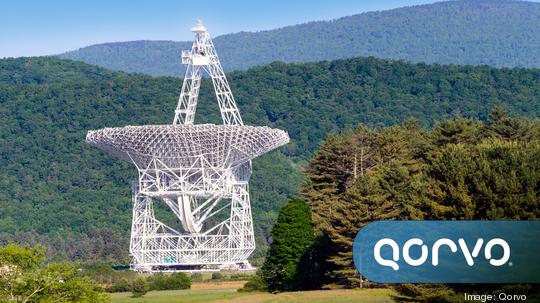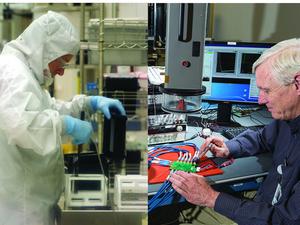
Qorvo (Nasdaq: QRVO), the Greensboro-based provider of RF solutions, has introduced seven new Spatium GaN Solid State Power Amplifier (SSPA) products to its standard product portfolio. Spatium SSPAs are a new way to enable applications including commercial and defense radar, electronic warfare and satellite communication, among others.
Spatium SSPAs are a preferred alternative to older, lower performing and operationally expensive traveling wave tube (TWT) designs.
According to the company, Qorvo’s Spatium family of SSPAs offers the performance, reliability and operational longevity needed for mission-critical applications. Superior to TWTs in both design and operation, Spatium products enable mission-critical systems to will be fully operational when customers need them.
“Our Spatium products represent a revolution in solid state power amplifier technology,” said Roger Hall, general manager of Qorvo’s High Performance Solutions business. “Our products deliver unmatched and unprecedented performance and reliability. We now offer customers additional standard Spatium products to help upgrade existing commercial and defense systems.”
An example of a Spatium-based application is the Green Bank Radio Telescope in West Virginia, which is setting new standards for ground-based radar exploration of space.
The telescope is a collaboration of the National Radio Astronomy Observatory and Raytheon Intelligence & Space. The goal of the project is to improve planetary radar capabilities that would allow for earlier and more precise analysis of targeted near-Earth objects (NEOs). Previously, traditional radar has lacked the necessary power to identify and characterize smaller NEOs.
Qorvo’s Spatium power amplifier technology offers advantages of higher RF power output and reliability and could play a key role in the next generation of ground-based planetary radar.
This new capability allows for exploring other planets and objects in the solar system without space probes or satellites. Powerful radar signals have been beamed from Earth into space and bounced from objects in the solar system since the 1950s. Using the Green Bank Telescope and Spatium as a transmitter will increase the ability to use radar to explore the solar system using ground-based instruments.
The National Radio Astronomy Observatory and the Green Bank Observatory are facilities of the National Science Foundation, operated under cooperative agreement by Associated Universities, Inc.
“We are proud to be part of this historical technological milestone,” Hall said. “Spatium technology provides a unique value proposition in the market and offers customers a solution not available anywhere else. We continue to invest in and develop new standard, higher power derivatives of Spatium products to meet the growing needs of our customers.”






